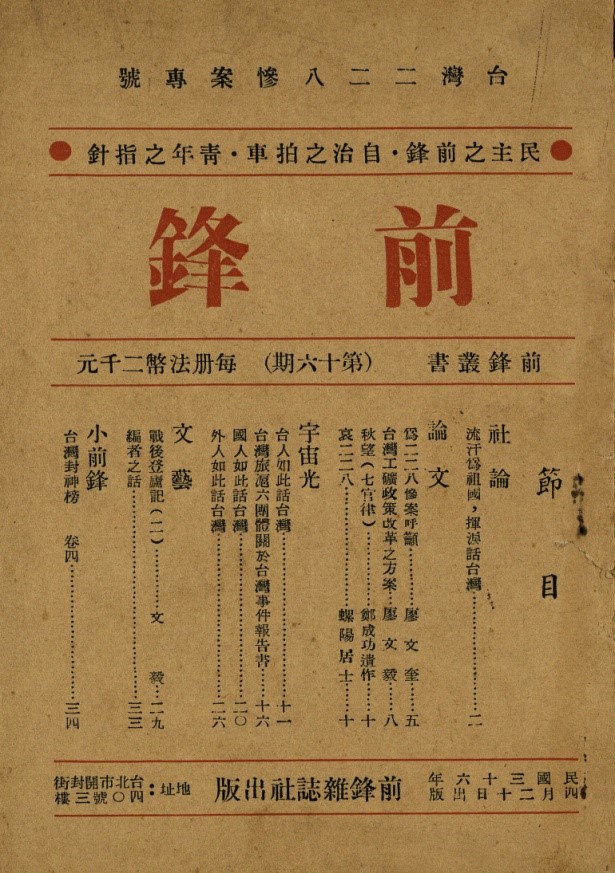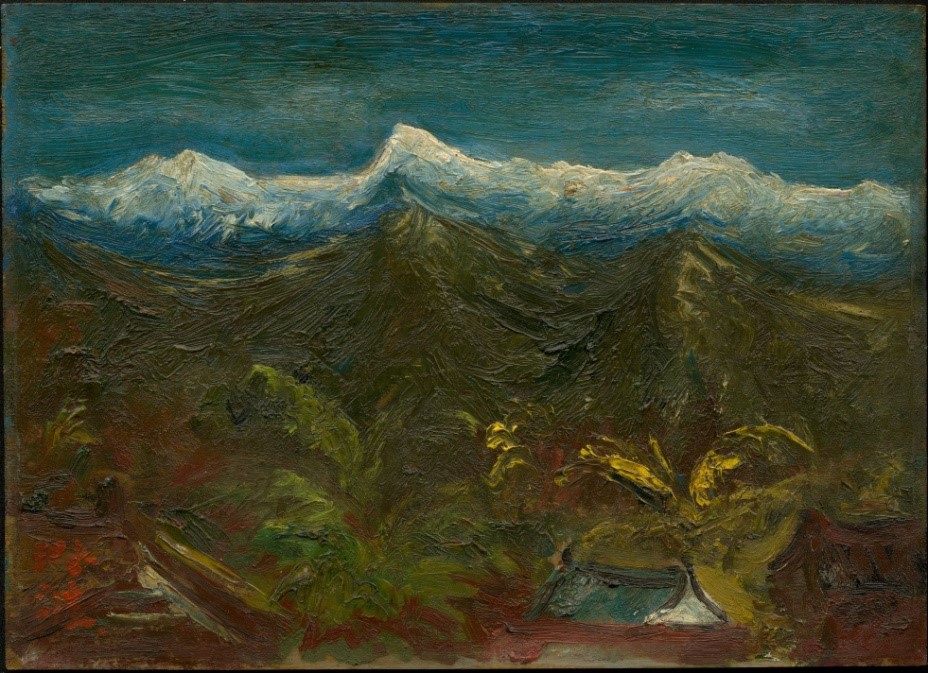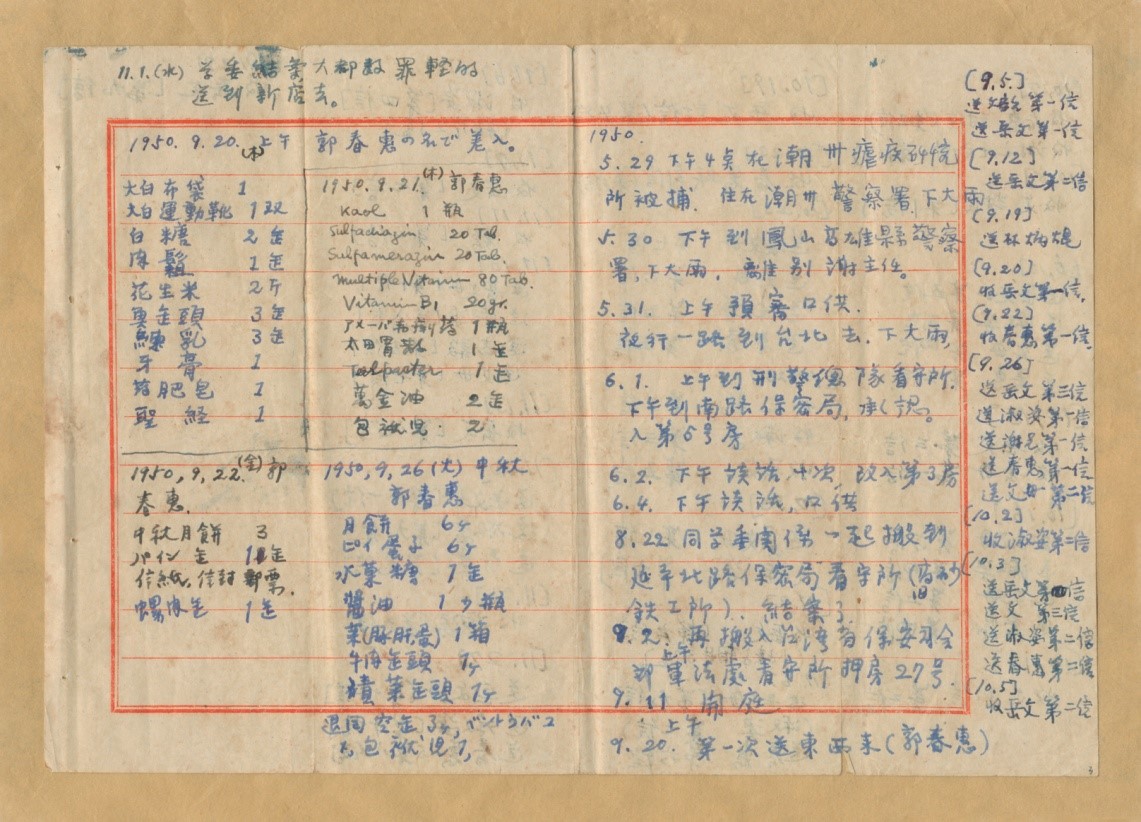|
(i) Yang Zhao-jia Collection (1945-1947)
Yang Zhao-jia (1892-1976) was born in Qingshui (known as Niumatou), Taichung. After graduating from the School of Political Science and Economics at Waseda University, he returned to Taiwan and led the Taiwan Local Autonomy League in 1930. However, the colonial government gradually restricted social movements, and the Taiwan Local Autonomy League was disbanded in 1937. In the 1940s, Yang Zhao-jia moved to China and conducted business in Shanghai. After Japan surrendered in 1945, he was nominated as the director of the Taiwan Rehabilitation Association, Shanghai Chapter, which contacted Taiwanese in China and organized petitions to form a new government. After the February 28 Incident, he made contacts with Taiwanese living in Beijing and Shanghai and appealed to the government to investigate the incident, comfort the people, and reform the system of governance. The series on the Taiwan Rehabilitation Association and the February 28 Incident Papers help illuminate the political situation in Taiwan and Shanghai. The series also include clips related to the February 28 Incident published by several newspapers.  Figure 1: Cover of a special report on the February 28 Incident, published by Qian-feng Magazine in April, 1947.
Source: Identifier: LJK_06_03_0370843, Yang Zhao-jia Collection, Taiwan Archival Information System.  Figure 2: Cover of a special report on the first anniversary of the February 28 Incident, published by the Taiwanese Association of Beijing and Tianjin in March, 1948.
Source: Identifier: LJK_06_03_0390845, Yang Zhao-jia Collection, Taiwan Archival Information System. (ii) Chen Cheng-po Painting and Papers (1904-1947) Chen Cheng-po (1895-1947) was born in Chia-yi. He graduated from the Tokyo Art School, now is known as Tokyo University of the Arts. His bold brushwork and unique strokes made him a well-known Taiwanese painter. His paintings were selected for the Exhibition of the Imperial Fine Arts Academy, the Fine Arts Exhibition of Taiwan’s Governor-General, and the Taiwan Fine Arts Exhibition several times. In the 1930s, he was invited to teach art at colleges in Shanghai. After the February 28 Incident, he represented citizens to negotiate with the Kuomintang military in Chia-yi since he spoke both Japanese and Mandarin. However, he was tried for “rebellion” and sentenced to death. He was executed by shooting in public in front of the Chia-yi Train Station. He died at the age of 52, another victim of the February 28 Incident. Along with his paintings and documents, this record group also documents his belongings at the time of his execution.  Figure 3: Accumulated Snow on Jade Mountain, painted by Chen Cheng-po in 1947. It was his last oil painting.
Source: Identifier: CCP_01_03039_OW1_05, Chen Cheng-po Painting and Papers, Taiwan Archival Information System. (iii) Jian Ji Papers (1929-1937) Jian Ji was born in Feng Shan, Kaohsiung. In 1922, he graduated from the Department of Education in Tainan Normal School, now known as National University of Tainan. He organized the Taiwan Peasants Union in 1926, a group later affiliated with the Taiwanese Communist Party. During the Japanese colonial period, he was sent to jail for ten years for being a member of the Taiwanese Communist Party. After World War II, he became a leader of a young person organization (San-min Chu-i Youth Corps) founded by the Kuomintang in Kaohsiung. During the February 28 Incident, he and Chang Zhi-zhong organized autonomous troops. In 1949, he served as a chief in the Taiwan Province Local Working Committee of the Chinese Communist Party. He was arrested in 1950 and sentenced to death. The Archives has collected Jian Ji’s partial diaries while he was detained in jail, giving readers a glimpse of his critical thoughts. (iv) Ye Sheng-ji Papers (1932-2002)Ye Sheng-Ji (1923-1950) was born in Tainan. In 1945, he entered the medical school at Tokyo Imperial University. After World War II, he returned to Taiwan and transferred to the medical school at National Taiwan University. After graduation, he worked in the National Taiwan University Hospital and the military camp in Feng Shan, Kaohsiung. In May, 1950, he was arrested and sent to jail; he was executed in November in Machangding, Taipei. The Archives has collected his diaries from 1938 to 1950 and the diary written in 1950, the year he was kept in jail. His diary records the process of arrest and transfer, and reflects on his feelings and daily life after martial law was declared.  Figure 4: Ye Sheng-ji’s manuscripts written in jail, recording the arrest and transfer process in 1950.
Source: Identifier: YSJ_03_03_0001, Ye Sheng-ji Papers, Taiwan Archival Information System. (v) Chen Wen-xing Papers (1917-1991) Chen Wen-xing (1927-2005) graduated from a police academy of the Taiwan Government General. After World War II, he worked as an accountant in an agricultural machinery company. He got on the wrong side of his mainlander chief and was framed after the February 28 Incident, forcing him to flee. The Archives stores Chen Wen-xing’s reports and evidential documents showing how he was threatened by chiefs during the White Terror. (vi)Chen Zhong-tong Papers (1964-1979)Chen Zhong-tong was born in 1937. He studied Hematology and Cancer Therapy in the medical school at Okayama University. In 1967, he met a member of the Taiwan Independence League and later secretly joined the group. He was suspected in relation to the independence movement and arrested by the Kuomintang government, spending ten years in prison. Correspondence between him and his family, petitions, and pleadings reflect a threatening image under the White Terror, and are carefully preserved in the Archives. |
 |



